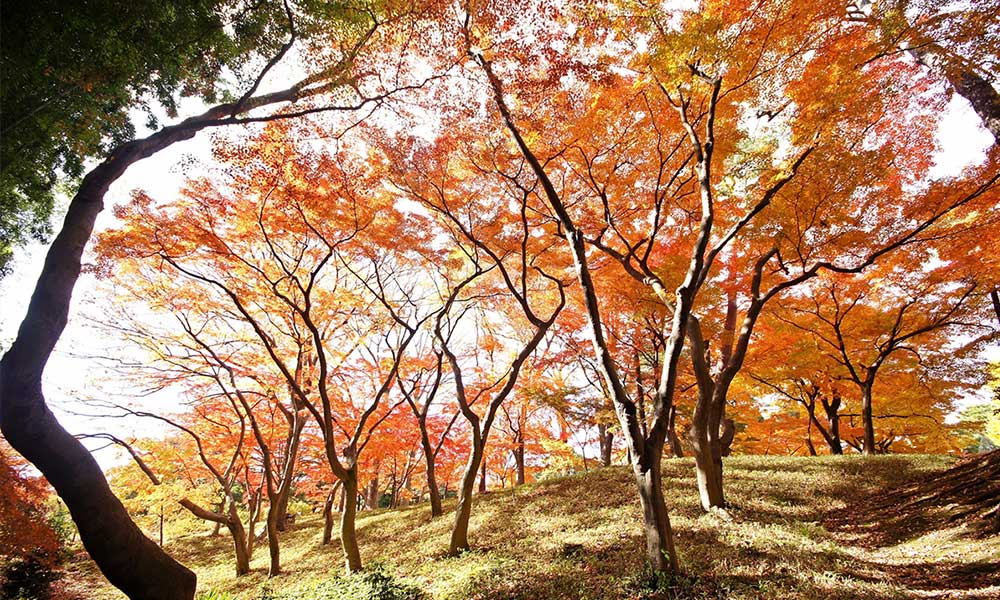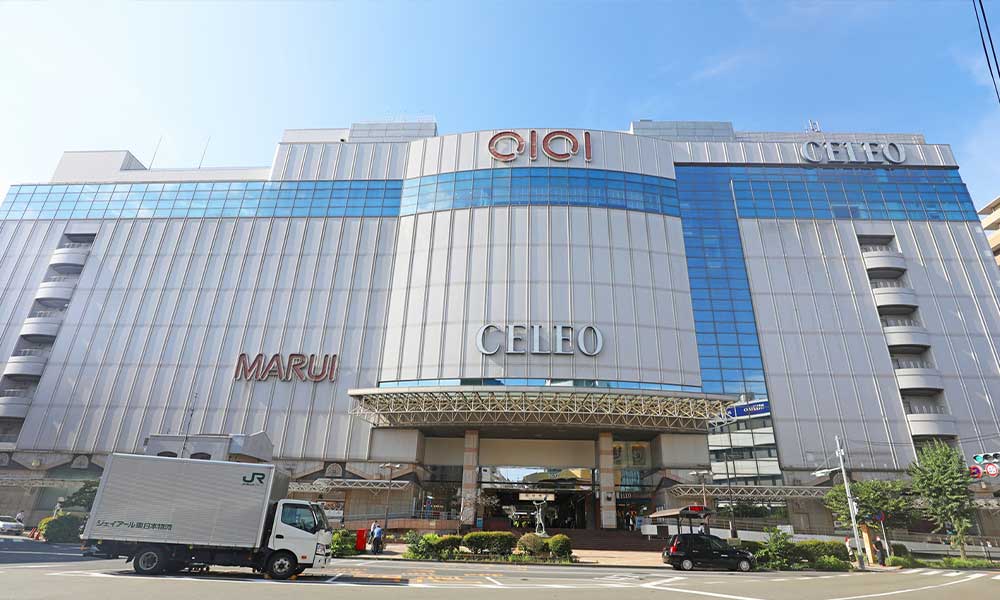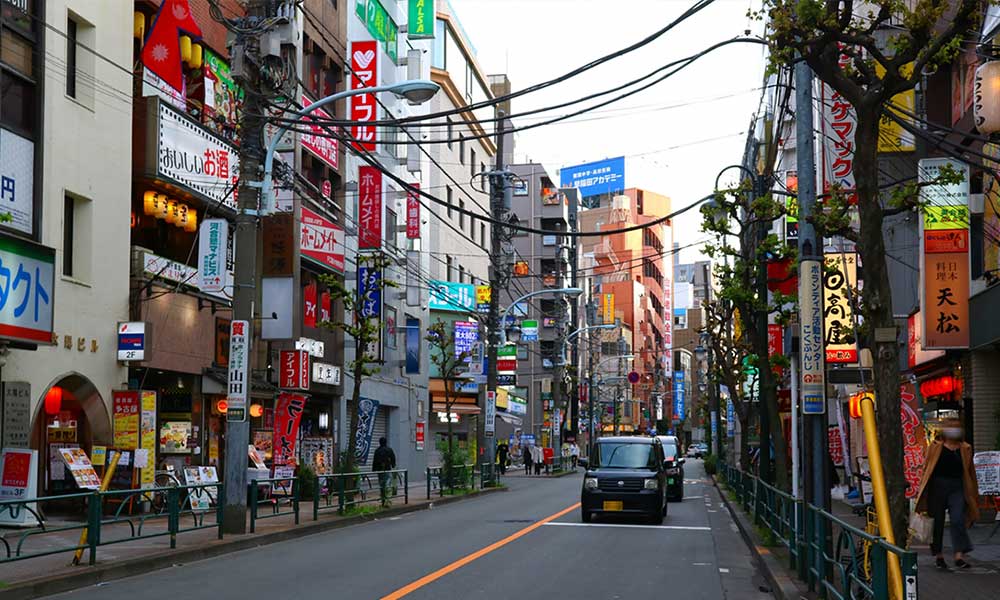Kokubunji City, Tokyo東京都国分寺市
Living in kokubunji City, Tokyo

We have Summarized the livability of kokubunji City, Tokyo.
KITATAMA AREA北多摩地域
-
- TACHIKAWA CITY 立川市
-
- NISHITOKYO CITY 西東京市
-
- MUSASHINO CITY 武蔵野市
-
- HIGASHIKURUME CITY 東久留米市
-
- MITAKA CITY 三鷹市
-
- CHOUFU CITY 調布市
-
- KOMAE CITY 狛江市
-
- KIYOSE CITY 清瀬市
-
- HIGASHIMURAYAMA CITY 東村山市
-
- KODAIRA CITY 小平市
-
- KOGANEI CITY 小金井市
-
- FUCHUU CITY 府中市
-
- KOKUBUNJI CITY 国分寺市
-
- KUNITACHI CITY 国立市
-
- HIGASHIYAMATO CITY 東大和市
-
- MUSASHIMURAYAMA CITY 武蔵村山市
-
- AKISHIMA CITY 昭島市
CONTENTS
- What kind of place is kokubunji City, Tokyo?
- kokubunji CityPR video
- How is the traffic situation in kokubunji City?
- How are the rent and land prices in kokubunji City?
- How is childcare and education in kokubunji City?
- How about shopping in kokubunji City?
- How about jobs and recruitment in kokubunji City?
- kokubunji City’s unique subsidy/subsidy system
What kind of place is kokubunji City, Tokyo?

Kokubunji City: A city where history and nature coexist in harmony, and where commerce and culture are attractive
Kokubunji City is located in the center of Tokyo and has an area of approximately 11.46 square kilometers.
It borders Kodaira City to the north, Koganei City to the east, Fuchu City and Kunitachi City to the south, and Tachikawa City to the west.
It has a population of approximately 128,000 and approximately 64,000 households. (As of June 2023)
Most of Kokubunji City is on the Musashino Plateau, with a flat terrain on a hilltop.
The history of Kokubunji City dates back to the Edo Period, when new land development progressed in areas that were originally wilderness, leading to the expansion of farmland.
In 1889 during the Meiji Period, 10 villages merged to form Kokubunji Village.
In the Taisho Period, the first railway line was laid in the area and a station was built, leading to increased exchange with other regions and a gradual increase in population.
In 1942, during the Showa Period, the area was incorporated as a town and became Kokubunji Town.
After the war, the population grew rapidly and infrastructure was developed, leading to the establishment of a city in 1964, when Kokubunji City was born.
Currently, Kokubunji City is a suburban residential city with a concentration of large commercial facilities and office buildings around Kokubunji Station, while the areas away from the station are mostly urban areas.
The area around Kokubunji Station has been redeveloped since the 2010s, and the city and scenery are modernizing with the construction of high-rise apartment buildings right next to the station. On the other hand, the old-fashioned shopping street remains, mainly in front of the north exit, with a row of unique shops and restaurants.
The Tonogayato Garden is located on a vast site just a 5-minute walk from the south exit. This garden was developed in the Taisho era and is famous for having been used as a villa for the Iwasaki family of the Mitsubishi zaibatsu since the early Showa era. It is currently operated by the Tokyo Metropolitan Government. You can enjoy seasonal flowers and spring water, and it is a popular oasis in the city.
There are many other tourist spots in Kokubunji city.
“Musashi-Kokubunji Park” is a 7-minute walk from the south exit of Nishi-Kokubunji Station and was built on the site of the former Japanese National Railways and Railway School. You can enjoy seasonal plants and flowers around the 500m circular grass plaza.
It is also famous for hosting various events, such as the Kokubunji Festival, a town festival held every November.
Musashi Kokubunji is a historic Shingon Buddhist temple located about an 11-minute walk from Nishi-Kokubunji Station on the JR Chuo Line. It is famous for housing the Shi Nyorai Seated Statue, an Important Cultural Property.
Kasuga Taisha Manyo Botanical Garden, located just a short distance from the temple, is also a popular spot and a rare facility that brings together plants that are mentioned in the Manyoshu. There are about 160 types of plants and plaques with poems from the Manyoshu written on them, making it a fun facility to just look around.
PR video of kokubunji City, Tokyo
[Kokubunji City Promotional Video] Kokubunji, a city where even aliens can easily live
[Kokubunji City PR Video] Crying out love in the center of Tokyo
How is the traffic situation in kokubunji City?

Kokubunji City is a city with well-developed railway and bus services and easy access to the city center.
There are 4 lines and 3 stations in Kokubunji City. It takes about 38 minutes from Kokubunji Station to Tokyo Station and about 23 minutes to Shinjuku Station.
| Kokubunji Station | JR Chuo Line・Seibu Tamagawa Line・Seibu Kokubunji Line |
| Nishi-Kokubunji Station | JR Musashino Line・JR Chuo Line |
| Koigakubo Station | Seibu Kokubunji Line |
Keio Dentetsu Bus, Tachikawa Bus, and Seibu Bus are the bus companies that operate within Kokubunji City.
There is also a community bus called “Bun Bus” that runs around the city’s major facilities.
There are no expressways or national roads that can be accessed from Kokubunji City.
There are many trains and buses, and it is close to major cities, so it is very convenient.
The JR Chuo Line is close to Shinjuku, but there are many delays and congestion during rush hour.
How are the rent and land prices in kokubunji City?

Kokubunji City is a quiet residential area with parks and commercial areas nearby, making it an easy place to live.
According to information from a real estate information site, the average rent in the city for a newly built apartment within a 10-minute walk from the station is about 79,000 yen for a 1K and 120,000 yen for a 2DK.
The average land price is about 1.31 million yen per tsubo.
The average price of a newly built apartment is 58,940,000 yen, the average area is 68.28 m2, and the average price per tsubo is 2,854,000 yen per tsubo. (As of 2018-2022)
There are many educational institutions such as universities along the Chuo Line, where Kokubunji City is located, and there are relatively many rental properties for single people such as 1K for students in areas close to the station, and there tend to be fewer spacious rental properties for families. It seems that it is quite easy to find properties of 2DK or more if you are a little further away from the station.
In recent years, high-rise apartments have been built in front of Kokubunji Station, and the market price has been on the rise. If you are looking for a used apartment a little further away from the station, the market price will drop significantly, so it may be a good idea to consider it.
Similarly, while the market price for detached houses is lower than in the surrounding popular areas, prices have been rising in recent years due to increased demand, so it may be easier to find a property if you also consider used detached houses.
The area around Kokubunji Station has a stable number of properties, including condominiums directly connected to the station.
Because it’s a relatively popular area, there’s a good chance that properties in good condition will sell out quickly.
How is childcare and education in kokubunji City?

Kokubunji City is a city with a wide range of educational facilities, child-rearing support, and local events.
Kokubunji City has 17 nurseries, 6 kindergartens, 11 elementary schools, 6 junior high schools, 2 high schools, 2 junior colleges/universities, and 2 vocational schools.
For both outpatient and inpatient medical care, infants covered by the Infant Medical Care Subsidy System (up to the first March 31st after reaching age 6) are fully subsidized.
Children between the ages of 7 and 18 under the “Compulsory Education Children’s Medical Expense Subsidy System” and the “High School Student Medical Expense Subsidy System” (up to March 31st after they reach the age of 18) are eligible for a subsidy of up to a maximum of 200 yen per visit from the self-pay amount for insured medical treatment, and full assistance is available for prescription medication, hospitalization, and home care visits.
Child allowances are provided in the following amounts: 15,000 yen for children under 3 years old, 10,000 yen for the first and second child aged 3 or older but not yet entering elementary school, 15,000 yen for the third child and onwards, and 10,000 yen for junior high school students.
Kokubunji City also has its own unique support system.
The Yurikago Kokubunji Interview provides pregnant women with a place to meet with a child-rearing specialist and discuss any worries or concerns they may have about childbirth or child-rearing. After the interview, they will also receive a child-rearing package (gift catalog, Kokubunji vegetable application postcard, vegetable recipes, etc.).
The “Childbirth and Childrearing Support Grant” is a financial support measure for childrearing households that has been fully implemented since fiscal year 2023, and offers childbirth support gifts (coupons for childbirth and childrearing related products worth 50,000 yen) and childrearing support gifts (coupons for childbirth and childrearing related products worth 50,000 yen).
The “First Birthday Support Project” is a support program for households with children who have just turned one year old, where midwives and other specialized staff conduct interviews and provide advice and information on childrearing. After the interview, you will receive a childcare package (10,000 yen worth of gift certificates).
We also distribute the childcare app “Bunji Childcare Navi,” which is a convenient app that allows you to manage your vaccination and health check schedules and get information on childcare-related events.
We also organize parenting classes and various lectures for first-time parents, and are a reliable support system that gives lectures on how to care for your baby, how to feed and bathe them.
Kokubunji City is also actively providing facilities where you can play with your children and places where children can play safely after school.
“Parent and Child Plaza” provides a place for parents and their guardians to play together, using facilities in the city and a room in a nursery school, for children aged 0 to 3 years old. They can also participate in various events and have opportunities to interact with parents and children of the same generation.
In addition, there are plenty of facilities and systems where children can play safely and securely, such as the “Children’s Center” where children up to 18 years old can play and learn freely, the “City Play Station” which is an adventure playground for young people where they can engage in outdoor activities and crafts, and the “Kokubunji City After-School Children’s Plan” where children can play, learn, and experience freely in the schoolyard after school.
There are many parks and childcare facilities, making it an easy place to raise children. There are also many high-quality schools.
Because the level of education is so high, many families aim to send their children to private schools from junior high school onwards, which means higher education costs.
How about shopping in kokubunji City?

Kokubunji City is a town with many commercial facilities where you can enjoy local specialties and miscellaneous goods.
Kokubunji City has many areas with commercial facilities and restaurants centered around Kokubunji Station and Nishi-Kokubunji Station.
The area around Kokubunji Station is especially popular as it has many commercial facilities directly connected to the station, making it an area where you can enjoy shopping without getting wet even in the rain.
“Celeo Kokubunji” is a complex facility with “Kokubunji Marui“, and is a store that sells fashion, miscellaneous goods, cosmetics, sweets, and more for people in their 20s and 30s. It is conveniently connected to the station and is filled with many customers every day.
“Meets Kokubunji” is a commercial facility located in a corner of a high-rise twin tower apartment building directly connected to Kokubunji Station. It is a relatively new commercial facility that opened in 2018, and is attracting attention as a complex facility with cafes, miscellaneous goods, clothing, etc.
“Kokubunji Steps” is a complex building located a 2-minute walk from the south exit of Kokubunji Station, and includes a supermarket, drugstore, restaurants, and clinics.
“nonowa Nishi-Kokubunji” is a shop located inside Nishi-Kokubunji Station on the JR Chuo Line and Musashino Line. This facility houses cafes, restaurants, convenience stores, and other places where you can shop without going outside, making it the perfect place to stop by if you have some free time before transferring.
Nishi-Kokubunji Lega is also located just a one-minute walk from Nishi-Kokubunji Station, and is a convenient facility housing restaurants, bookstores, clinics, and more.
In addition, the city has about 10 supermarkets, mainly Maruetsu, Seiyu, and Coop, making it an area where you won’t have any trouble buying daily necessities.
The area in front of Kokubunji Station is a convenient location with commercial facilities, supermarkets and other amenities where you can find anything you need.
Except for the areas around stations, there are some areas where there aren’t many shops.
How about jobs and recruitment in kokubunji City?
Kokubunji City has a wide variety of job opportunities and good access to the city center
The average annual salary in Kokubunji is 4.6 million yen.
Kokubunji has many areas with commercial facilities and restaurants, so there are a steady stream of job openings in sales, customer service, and other service-related fields.
The manufacturing industry is also relatively well developed, with factories for commercial machinery and printing, so you can expect to find jobs.
Although there are not many, there are also universities, research institutes, and medical institutions, so there are also jobs related to education, research, and medicine. Medical institutions in particular have job openings for doctors, nurses, medical administration, etc.
It is located close to the station, where there are commercial facilities and restaurants, so there are a steady number of job openings in sales and other areas, and it is also convenient for commuting.
It is basically a residential area with not many companies, and there are few job openings in certain positions such as sales and clerical work.
kokubunji City, Tokyo’s unique subsidy/subsidy system
kokubunji City, Tokyo’s unique housing assistance and subsidy system
kokubunji City, Tokyo’s unique childcare support system
| Kokubunji City Childbirth and Childrearing Support Project Yurikago Kokubunji Interview First Birthday Support Program Childcare medical assistance |


















